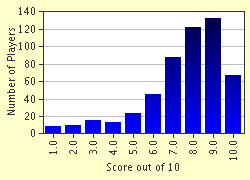Quiz Answer Key and Fun Facts
1. Australians are Aussies, and New Zealanders are Kiwis, so what are Canadians?
2. This fellow went on a fishing trip for a northwest passage to India and discovered Newfoundland, which became Canada's tenth province in 1949.
3. This warm wind blows from the Rockies and creates summerlike temperatures in the dead of winter.
4. This town on the western shore of Hudson's Bay is a mecca for polar bear watchers.
5. Hockey is, of course, Canada's national winter sport, but this C sport is hugely popular with Canadians of all ages and genders.
6. This device, invented in Canada, has been invaluable in space exploration.
7. Prior to settlement of the Canadian West, the main economic activity was the fur trade. What form of transportation was used to get the furs to Montreal to be shipped to Europe?
8. This Quebecois dessert, by way of France, is enjoyed by sweet-toothed Canadians from Newfoundland and Labrador to Vancouver Island.
9. This French explorer is the man who gave Canada its name.
10. This western city is best known for its world-famous Stampede.
Source: Author
Cymruambyth
This quiz was reviewed by FunTrivia editor
minch before going online.
Any errors found in FunTrivia content are routinely corrected through our feedback system.

